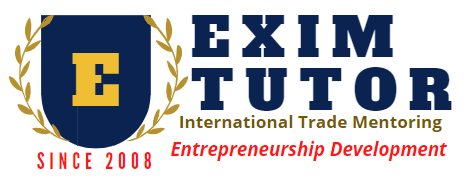Textile Exporting Opportunity : A Golden Era for Global Expansion
India, long celebrated as a global textile hub, is experiencing a renewed surge in its textile export potential. With rising global demand for sustainable, affordable, and diverse fabrics, Indian textile exporters are well-positioned to capture significant international market share in 2025 and beyond. From cotton to technical textiles, India’s vast production capabilities and skilled workforce make it a prime sourcing destination for the world.
Why India Holds a Competitive Edge in Textile Exports
- Diverse Raw Materials and Strong Manufacturing Base
India is the largest producer of cotton and jute and the second-largest producer of silk and man-made fiber. With over 45 million people employed in the sector, the industry benefits from deep-rooted expertise, integrated supply chains, and abundant raw material availability. - Government Support and Export Incentives
Through initiatives like the Production Linked Incentive (PLI) Scheme, RoDTEP, TUF Scheme, and the Mega Textile Parks, the Indian government is strongly supporting textile manufacturers and exporters to become globally competitive. - Growing Demand for Sustainable Textiles
The shift towards eco-friendly and ethical fashion in the US, EU, and Japan is boosting demand for organic cotton, natural dyes, and recycled fabrics – areas where Indian manufacturers excel. - FTAs and Bilateral Trade Deals
India is actively signing Free Trade Agreements (FTAs) and Preferential Trade Agreements (PTAs) with key regions like the UAE, Australia, the UK, and the EU, which are expected to lower tariffs and ease market access for Indian textile exports.
Top Export Markets for Indian Textiles
- United States – Major market for cotton garments, home textiles, and technical textiles.
- European Union – A leading importer of fashion textiles, organic cotton, and finished garments.
- United Arab Emirates & Middle East – Huge demand for ethnic and home décor textiles.
- Bangladesh & Vietnam – Import Indian fabrics and yarns for their own garment industries.
- Latin America & Africa – Emerging markets with growing middle-class consumer demand.
Popular Indian Textile Export Categories
| Category | Products |
|---|---|
| Apparel | Ready-made garments (men, women, kids), ethnic wear |
| Fabrics | Cotton, polyester, viscose, silk, denim |
| Home Textiles | Bed linen, towels, curtains, rugs |
| Yarns & Fibers | Cotton yarn, polyester yarn, blended fibers |
| Technical Textiles | Agro textiles, geo-textiles, industrial filters |
Export Challenges and How to Overcome Them
- Compliance & Certification: Meet global standards (like OEKO-TEX, GOTS, ISO) to enter premium markets.
- Digital Presence: Invest in a professional website, virtual showrooms, and participate in B2B platforms.
- Supply Chain Management: Streamline production and logistics to ensure timely deliveries.
- Market Intelligence: Stay updated on trends, buyer needs, and changing trade regulations.
Tips for New Exporters
- Start with Small Orders via B2B Portals: Platforms like Alibaba, IndiaMART, TradeIndia, and Fibre2Fashion can help you reach international buyers.
- Attend International Trade Fairs: Events like Heimtextil (Germany), Textile Fairs USA, and Texworld Paris offer excellent networking and lead generation.
- Partner with Export Consultants: Seek guidance from EXIM experts or organizations like EPCH, AEPC, TEXPROCIL, and FIEO.
- Focus on Niche Products: Organic fabrics, handloom products, and ethnic textiles have strong international appeal and fetch premium prices.
Conclusion
With favorable market conditions, strong government backing, and global demand for quality and sustainability, the Indian textile export sector is on the brink of a transformative decade. Entrepreneurs, SMEs, and established manufacturers should seize this golden opportunity to take “Made in India” textiles to the world stage.
Whether you’re a seasoned exporter or a newcomer, 2025 is the ideal time to expand your footprint globally in textiles.

